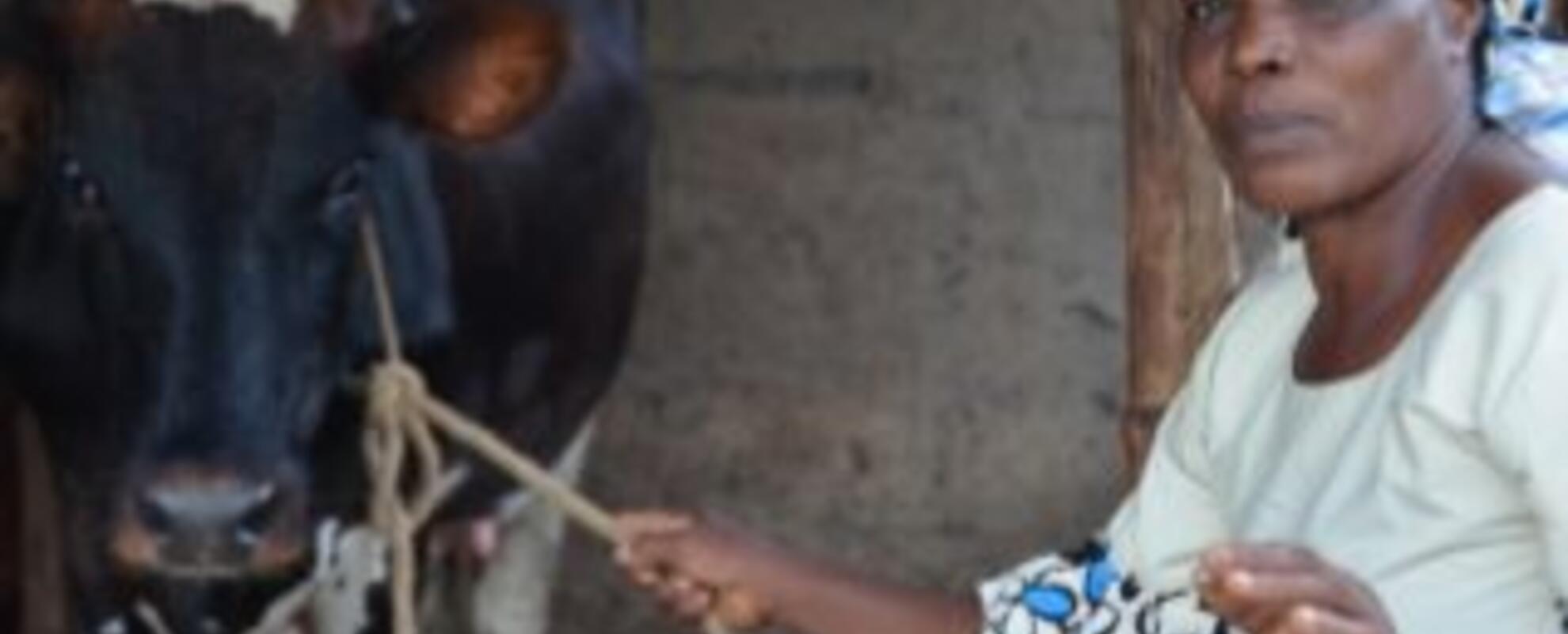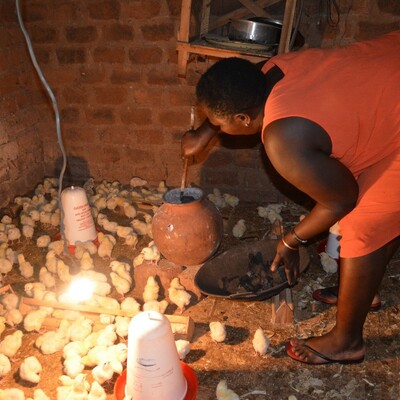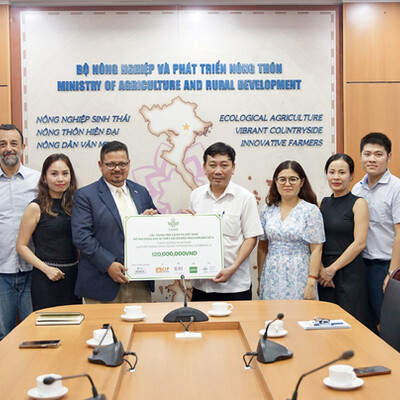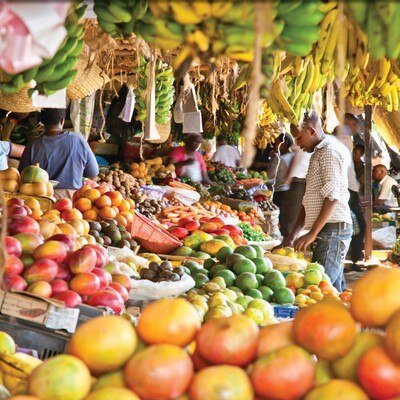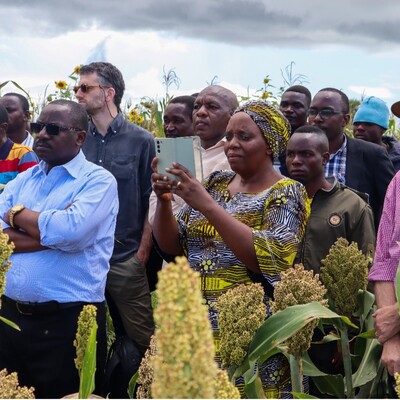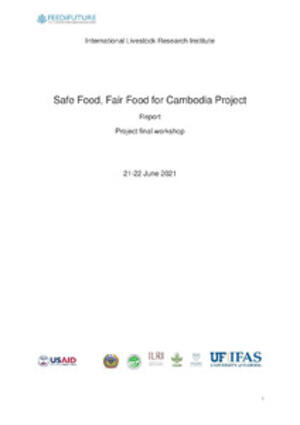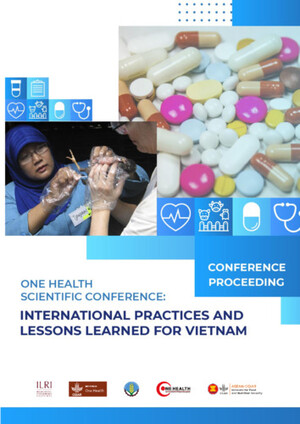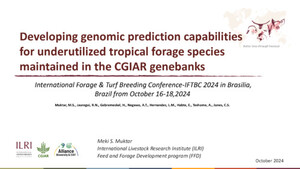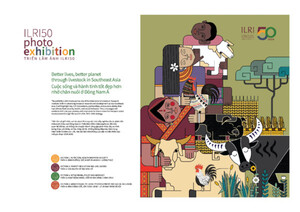
Tanzania livestock master plan projects the creation of nearly two million jobs
Faustina Akyoo is a dairy farmer in Tanga, Tanzania. Her five dairy cows are an important livelihood asset for her family (photo credit: ILRI/Paul Karaimu).
International humanitarian assistance has long since slipped down in the agenda of African officials. With rapid economic growth forecast in much of the continent, government development priorities largely focus on increasing productivity and investment. And in Tanzania, where approximately 37% of the rural households possess cattle, chicken, goats, pigs and sheep, this puts livestock at the centre of the development debate.
Despite accounting for 11% of the African cattle population, livestock-related activities contribute only 7.4% to Tanzania’s GDP and growth of the livestock sector at 2.6% is low. In recent years, the government of Tanzania has prioritized the transformation of the agricultural sector, yet the absence of a livestock roadmap has hindered progress. However, detailed inter-disciplinary research by the International Livestock Research Institute (ILRI) and the Ministry of Agriculture, Livestock and Fisheries (MALF) reveals the potential benefits of a comprehensive livestock master plan in Tanzania.
With relatively small levels of investment in the livestock sector, USD621 million over five years, the joint MALF/ILRI plan aims to create 1.8 million full-time jobs—80% going to farm family members and another 20% to hired employees. Beyond the direct benefits to the livelihoods of rural people, transformation of the country’s livestock sector has the potential to lower foods prices, benefitting urban consumers, and to generate foreign exchange earnings through increased exports. Implementation of the livestock master plan is also seen as critical to achieving food and nutritional security at household and national levels.
The Tanzania plan assesses contributions by three traditional pillars of livestock development—breeds, feeds, health—as well as by institutional policies on key livestock value chains (crossbred dairying, and red meat, pig and poultry production) for the long-run development of the sector. The plan provides evidence that investment in the development of crossbred dairy cows could lead to a 35% surplus of milk production over domestic demand, enhancing nutritional security, industrial output (e.g. in the baking industry) and export earnings.
The story is less positive in the red meat subsector where limited access to land for grazing and feed production will constrain growth in the beef sector. Without a substitution away from beef consumption, Tanzania is still likely to face a 17% red meat deficit by 2022. Since small ruminant meat accounts for less than 20% of red meat production, it is unlike to significantly help close this projected deficit. With a rising population, this is likely to put upward pressure on red meat prices.
Successful interventions—largely in the areas of breed selection, disease control and feed production—could significantly expand the share of poultry in the economy by 182%, to USD323 million within five years. Interventions in the pig sector—leading to more sustainable and climate-smart operations and ensuring high-quality and safe pig meat/pork—could significantly reduce poverty by increasing household incomes, food and nutritional security. The contribution of pork to Tanzania’s GDP would be expected to rise by 83%, to USD36 million by 2022.
Perhaps most importantly, the growth of the poultry and pig subsectors would enable Tanzania to close the projected ‘all meat’ deficit, increasing the share of white meat to total meat consumption from the current 9% to 41% by 2032. There are, however, some caveats. The benefits that can accrue from implementing the livestock master plan will require investment in changing tastes away from red meat.
Funded by the Bill & Melinda Gates Foundation, development of the Tanzania livestock master plan was overseen by a high-level technical advisory committee convened by the MALF livestock permanent secretary, Maria Mashingo, and chaired by Catherine Dangat, ministry’s director for policy and planning. The committee comprised directors of key MALF livestock-related departments and other government agencies, and representatives from the private sector, civil society organizations and development partner agencies.
Data collection and quantitative diagnostics were supported by ongoing involvement of national livestock experts and in consultation with a wide range of key stakeholders. The quantitative sector analysis was undertaken using a Livestock Sector Investment and Policy Toolkit developed by the World Bank, the Agricultural Research Centre for International Development (CIRAD) and the Food and Agriculture Organization of the United Nations working under the auspices of the African Union Interafrican Bureau for Animal Resources.
Read the key findings of the Tanzania livestock master plan in this ILRI brief. Separate briefs on the development of key value chains, breeding, health, feed and policies can be found here.
The full document will be available shortly.





